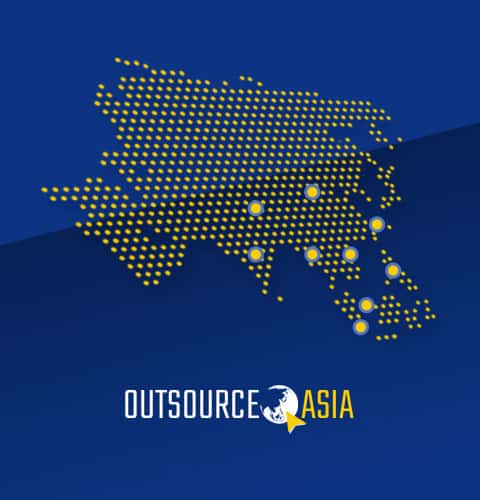
Harnessing Outsourcing for Value Creation
The relationship between outsourced service providers and their customers is constantly evolving. While each party has its own vision of what optimal transparency entails, both can take actions to advance the process beyond its current state. Global businesses can create value by harnessing the benefits of outsourcing as it is used to decrease redundant tasks, enhance efficiency, increase cost-effectiveness, and guarantee adequate governance
In an outsourcing relationship, customers want to ensure that their extended enterprise risk management (EERM) plan is followed. As more business functions are implemented or handled outside of the organization, a well-executed EERM program is essential to manage outsourcing risks better, faster, and cheaper. This is important, especially in a post-pandemic world where more and more companies are managing distributed teams and remote workforces on top of rising cyber threats, business resiliency issues, and operational risk considerations.
Outsourced service providers, on the other hand, are responding to an array of requirements from customers such as the demand for complex information that is not always easily accessible or readily available. The question is: How can outsourcing be effectively harnessed to create value for global businesses?
Start a Conversation
Transparency is essential for a successful outsourcing engagement, which necessitates communication between the two sides on goals and information requirements. There are no conventional protocols and procedures for communication in industries that haven’t evolved enough to have a common understanding of what, when, and how information should be conveyed.
To address the prevalent fear of outsourcing relationships, the industry will continue to evolve. Companies should take inventory, debate requirements, and examine current and future-state methods in the meantime.
Assess the Situation
This entails looking at risk domains and service provider connections for customers. Companies can weigh the outsourcing risks that come with each provider by identifying and developing a matrix of providers that impact those domains. More vital functions may imply greater risk, necessitating a higher level of data collection and assurance from providers.
Meanwhile, providers should think about building ways to satisfy client requirements. Providers can give better information in a more effective manner if they take a proactive approach to recognizing significant milestones. Companies can establish a baseline for consumer needs by evaluating existing customer contracts, convening focus groups, tracking industry trends, and completing questionnaires.
Construct A Framework for Integrated Risk and Controls
Many outsourcing firms struggle with deciding what to deliver, as well as when and how to provide it. Customers, likewise, have difficulty correlating the level of risk to the information required. Both sides, though, can take initiatives to improve transparency.
For clients, this could entail gathering regulatory and other requirements across lines of business and building a governance architecture that includes each risk area inventoried, associated risks, and controls to ensure suppliers follow the rules.
To set standards on information flow for each phase, these needs should be included into the provider cycle. Contract conditions, service level agreements, and information that will be shared to offer thorough oversight are all examples of this.
To be more efficient and meet the needs of their customers with a consistent message across the company and throughout each phase of the outsourced lifecycle, providers can consider integrating reporting requirements into an integrated risk and controls framework.
Measure Proficiency
Companies that save costs and improve information flow efficiency can minimize both the actual and perception of risk. Customers can eliminate potential outsourcing firms that don’t meet their standards to decrease risk, while transparent outsourced service providers may provide customers the opportunity to include them at a higher strategic level, where they can add more value. Learning how to use outsourcing transparency to manage risk and harness provider capabilities can help both sides gain a competitive edge. Effective third-party risk management can increase a company’s return on equity by 4% to 5% in most cases.
Companies must establish a standard for acceptable risk tolerance while outsourcing. Once the integrated risk and controls architecture has been built, which will expose control assurance gaps, this baseline can be set. As more rigorous laws drive the need for better assurance through control frameworks, measuring risk domains for maturity is becoming increasingly critical.
Customers can evaluate providers based on how well they receive, respond to, and deliver information requests. Once a customer knows how suppliers compare to the baseline, they can take steps to eliminate gaps and cut down on unnecessary costs. By assessing the quality of suppliers, this measuring technique can be utilized to make strategic decisions. Providers can also discover gaps in controls across the company, as well as discrepancies in customer communication, utilizing the integrated risk and controls requirements baseline.
Improve Reporting
Customers can request specific independent auditor reports or control frameworks to satisfy their collective requirements instead of many pieces of information in diverse formats. Similarly, rather than replying every time a customer requests information, suppliers can demonstrate a mature control environment by giving an independent auditor report that is tailored to the customer’s specific requirements.
Due diligence questionnaires, independent audit reports, ad hoc reporting, and internal audit site inspections are all options for gathering information. Many suppliers, however, struggle to produce accurate and reliable data that can withstand regulatory scrutiny because most clients demand a personalized response to information requests.
Because of the increasing reliance on outsourcing, many businesses now manage thousands of supplier relationships at any given time. Managing requests is inefficient and costly without a defined mechanism for digesting data. To accomplish significant efficiency, external reporting methods such as independent auditor reporting can be supplied.
Implementing actions such as collecting inventory, addressing requirements, and assessing current and future processes can provide value as firms strive for a mature degree of transparency in outsourcing. Both parties should engage in an open discourse to determine requirements and the most effective ways to address them.
Reap the Business Benefits of Outsourcing
Outsourcing enables organizations to establish a team of skilled specialists without incurring the costs of full-time staff, and without becoming bogged down with duties that can be handled without your involvement. When you outsource, you can concentrate your time, attention, and resources on your company’s core skills, rather than on defining new goals and figuring out how to achieve them. If you want to start reaping the business benefits of outsourcing, get started with a FREE CONSULTATION with Outsource Asia experts today.


